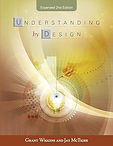
UbD Design Template
know where you're going → plan how you'll get there → design the journey
Online learners need clear roadmaps. Understanding by Design (UbD), developed by Grant Wiggins and Jay McTighe, offers a backward design model that begins with identifying desired outcomes and then plans instruction to achieve those goals. UbD's explicit learning goals and assessment criteria help students understand course structure and progress through modules purposefully.
Backwards design supports self-directed learning by creating clear performance expectations and success criteria, enabling students to self-assess and monitor progress—crucial for online environments with less direct supervision. With clear end goals and assessment criteria, students can move through online content at appropriate speeds while staying focused on learning targets.